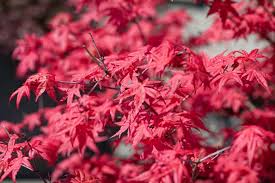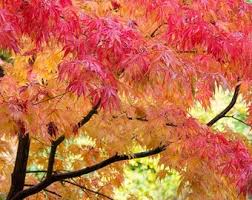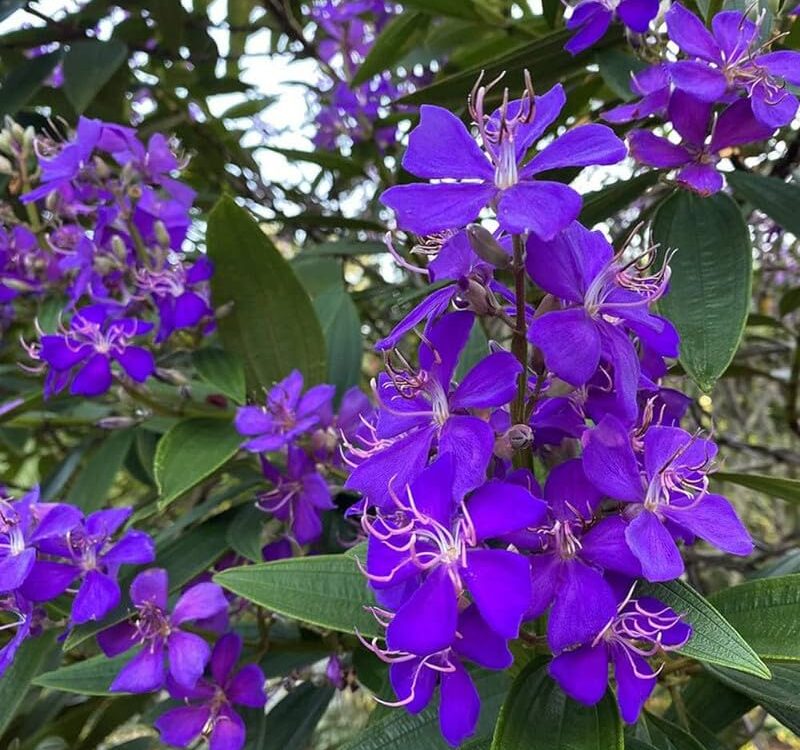Pruning your Acer palmatum ‘Fireglow’ (Japanese Maple) to achieve that beautiful, traditional shape requires a thoughtful and gradual approach. Here’s a guide on how to prune it properly for that elegant, airy look:

🛠️ Tools You’ll Need
- Sharp, clean pruning shears or secateurs
- Pruning saw (for thicker branches)
- Rubbing alcohol (to disinfect tools)
🗓️ When to Prune?
- The best time to prune Japanese maples is late winter to early spring (before new growth starts) or in mid-summer after the leaves have fully matured.
- Avoid heavy pruning in late spring, as the sap is actively flowing, or in fall, as this can stimulate new growth that may not harden before winter.

✂️ Step-by-Step Pruning Guide
1. Visualize the Desired Shape
- Aim for an open, airy structure with distinct layers, mimicking the flowing look of Japanese cloud pruning. The goal is to create a balanced, rounded canopy that lets light and air pass through.
2. Start with Dead or Diseased Branches
- Begin by removing any dead, damaged, or diseased wood. Cut these branches back to healthy wood or remove them entirely.
3. Thin Out Overcrowded Areas
- Remove inner branches that are crossing or growing inward toward the center of the tree. This helps open up the canopy and encourages better airflow.
- Focus on thinning out dense areas, allowing the branches to fan out horizontally. Aim for a balanced structure with enough space between branches.
4. Create Layers (‘Niwa’ Style)
- To achieve that Japanese layered look, select horizontal branches that form distinct layers. Trim away excess branches above and below to emphasize each layer.
- Keep branches that extend outwards horizontally. Trim the ends lightly to shape them and create a cascading effect.
5. Shaping the Crown
- To maintain a rounded canopy, shorten the longest branches. This encourages lateral growth and prevents the tree from becoming too tall and leggy.
- Trim the tips of the branches to refine the shape but avoid cutting too much at once.
6. Focus on Branch Angles
- Prune to maintain the natural angles and curves of the tree. Japanese maples look best when their branches are allowed to develop in a zigzag pattern, giving it a more natural, flowing shape.
🌳 Tips for Achieving a Japanese Aesthetic
- Less is more: Japanese pruning is about simplicity. Take your time and step back frequently to assess the overall shape.
- The shape should appear asymmetrical yet balanced, with layers resembling clouds or waves.
- Aim for a “see-through” look, where the branches and foliage allow glimpses of the space behind them.
⚠️ Pruning Mistakes to Avoid
- Avoid over-pruning; Japanese maples are sensitive and can suffer from too much trimming.
- Don’t cut too close to the main trunk; leave a slight stub to prevent damage.
- Never prune more than 25-30% of the tree in one go, as this can stress the tree.
By following these tips, your Acer palmatum ‘Fireglow’ can develop that graceful, layered Japanese shape. Remember, patience is key—it may take a couple of years to fully achieve that classic look. Happy pruning!





